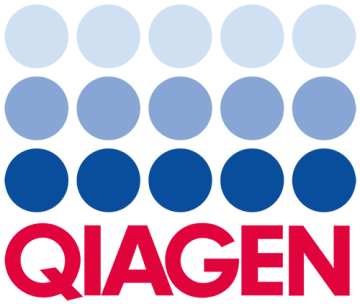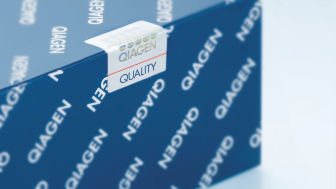
SYBR® Green and Probe PCR Technologies
LNA-enhanced qPCR solutions for any mRNA/lncRNA/miRNA, with your choice of SYBR® Green or hydrolysis probe detection
Choosing your detection method
RNA profiling by qRT-PCR
Quantitative reverse transcription PCR (qRT-PCR) is widely used in RNA analysis – from screening and profiling, to validation of NGS studies and verification of results from functional studies. Setup and data analysis are relatively simple for most labs. Plus, the method is fast, extremely sensitive and inexpensive, and offers linear detection over a broad order of magnitude. A variety of fluorescence detection chemistries are available, but most researchers prefer using SYBR® Green dye or hydrolysis (TaqMan) probes. Fluorescence is measured during each PCR cycle and is proportional to the amount of PCR product. Which method is right for you? Read on to explore the differences.
SYBR® Green detection
SYBR® Green qPCR uses standard forward and reverse PCR primers and includes the fluorescent dye SYBR® Green in the reaction mix. During amplification, the dye binds to all double-stranded DNA molecules and emits a fluorescent signal that is detected during the extension step of the reaction. The signal intensity increases with increasing cycle number as the PCR product accumulates.
The main disadvantage with this method is the potential to generate false positives, which occur if your PCR conditions are sub-optimal. Since the dye binds to all double-stranded DNA molecules, any primer–dimers or non-specific PCR products that form will also contribute to the fluorescent signal. That is why it is critical to use a highly specific PCR system with well-designed primers and reaction conditions that are optimized to ensure only the desired targets are amplified.
QIAGEN’s high-performance SYBR® Green-based PCR systems offer some advantages over hydrolysis probes. First, it is possible to perform melting curve analysis immediately following the PCR, so you can confirm high specificity of the reaction and rule out formation of primer–dimers or non-specific amplicons. It also provides higher flexibility in your assay design, because you only need two primers, instead of two primers and a probe. Furthermore, the dye’s non-specific binding enables analysis of many different targets without having to synthesize target-specific, labeled probes, reducing your assay setup and running costs.
Probe-based detection
Hydrolysis probe-based detection also requires standard forward and reverse PCR primers, plus a fluorescently labeled hydrolysis probe that is specific to the region between the primers. The hydrolysis probe contains a fluorophore on its 5' end and a quencher moiety on its 3' end, so it does not fluoresce when intact. During PCR, the primers and probe anneal to their complementary sequences, and as the amplicon is elongated, the probe is cleaved by the 5'–3' exonuclease activity of Taq DNA polymerase. This cleavage separates the fluorophore from the quencher, resulting in a fluorescence signal that is proportional to the amount of accumulated PCR product.
Hydrolysis probes provide highly sensitive and robust detection, because only the desired PCR product is detected. Plus, the ability to label probes with different dyes allows multiplexing and detection of distinct sequences in the same reaction. However, PCR specificity is equally critical with this method. Amplification artifacts such as non-specific PCR products and primer–dimers may still be produced. Although these do not directly contribute to the fluorescence signal, competition between the specific product and reaction artifacts for reaction components can compromise assay sensitivity and efficiency, and reduce the yield of your desired PCR product.
Assay design can pose a significant challenge with probe-based detection, especially for analysis of short targets and miRNAs. In these cases, designing conventional DNA oligonucleotide primers and probes is extremely difficult, and often impossible. Since the target sequence is very short, there is not enough space to design two primers and a probe that do not overlap and still have an acceptable affinity and specificity for the assay to work. QIAGEN’s new probe-based PCR solutions overcome this problem by incorporating locked nucleic acids (LNA) into the design. Enhancing the oligos with LNA bases allows us to create very short primers and probes that are spatially separated and still display extremely high affinity and specificity to provide a successful analysis.
LNA enhancement allows us to design very short, sequence-specific primers and probes that do not overlap but still display extremely high affinity and specificity for a successful analysis. This just isn't possible with conventional oligonucleotide chemistry.
What does LNA do for your PCR?
LNA-enhanced primers ensure optimal sensitivity and specificity and allow a higher degree of freedom regarding positioning of primers. Primers containing LNA display higher binding affinity, which dramatically increases the sensitivity of the qPCR assay. This higher affinity enables the design of shorter primers for both types of assays as well as shorter hydrolysis probes for probe assays. Shorter primers and probes make the placement of the assay design on the target gene or transcript more flexible, so it is easier to achieve an optimal assay design that minimizes non-specific amplification. In addition, by varying the number of LNA bases, we can adjust the primer Tm so that all qPCR primers have the optimal Tm for the specified cycling conditions, regardless of the target GC content.
Higher affinity
- Best in class sensitivity
- Less sample input is needed
- More transcripts can be detected, even those expressed at low levels
Tm normalization
- Optimal detection of all transcripts under the same conditions, regardless of variation in target GC content
- Flexible and accurate primer positioning anywhere within the target sequence
- Detection of specific isoforms, splice variants or SNPs
- Avoid regions of the transcript targeted by siRNA or LNA GapmeRs
Higher specificity
- Accurate discrimination between closely related sequences differing by as little as one nucleotide (e.g., SNPs)
Expanded miRNA PCR portfolio
Hydrolysis probe-based detection chemistry is now available with our LNA-enhanced miRNA PCR solutions.
Our popular miRCURY LNA miRNA PCR System delivers fast, highly sensitive and inexpensive miRNA profiling by qPCR, and now you can choose between SYBR® Green or hydrolysis probe-based detection. The newly available miRCURY Probe miRNA PCR System offers an even higher level of specificity and robustness for your miRNA analyses.
LNA enhancement overcomes the challenges associated with conventional DNA oligos, and makes it possible for us to design very short, miRNA-specific primers and hydrolysis probes that don’t overlap or form primer–dimers. Tm normalization maximizes detection of all transcripts under the same conditions, regardless of GC content, providing exceptional sensitivity and extremely low background and enabling accurate quantification of low levels of miRNA even from biofluids. Optimal LNA positioning allows us to design assays that can distinguish miRNA sequences differing by a single nucleotide and discriminate mature miRNAs from precursors. The fast and easy-to-follow protocol minimizes pipetting and reduces day-to-day and site-to-site technical variation.
With our miRCURY LNA miRNA PCR systems, we offer a comprehensive portfolio for highly flexible, PCR-based miRNA quantification and profiling. The choice of individual assays or fully flexible custom panels makes it simple to tailor the experimental setup to your exact research needs – from screening and profiling, to validation of NGS studies or verification of results from functional studies. Using the same cDNA reaction, you can shift seamlessly between individual primers, predesigned miRNome and Focus panels or even custom-designed panels.
Discover miRCURY LNA miRNA assays and panels
New! LNA-enhanced mRNA/lncRNA PCR
Now available! QuantiNova LNA PCR Systems for mRNA/lncRNA targets, with your choice of SYBR® Green or hydrolysis probe-based detection.
We combined all of the best features of our QuantiTect primer assays with those of the RT2 Profiler system and enhanced them with LNA technology, to create a comprehensive, new portfolio for PCR-based mRNA/lncRNA expression analysis. This new QuantiNova LNA PCR System has been optimized for use with our trusted QuantiNova PCR chemistry and brings superior sensitivity and specificity to your PCR analyses. You can choose between SYBR® Green or hydrolysis probe-based detection and enjoy a complete offering of predesigned single assays, pathway and focus panels. Plus, our custom builder tools allow easy ordering of custom gene- or transcript-specific assays and panels tailored to address your research questions or validate your sequencing results.
The incorporation of LNA technology enables the design of shorter primers and hydrolysis probes, making the placement of the assay design on your target gene or transcript more flexible. As a result, it is easier to obtain an optimal assay design with minimal non-specific amplification, because we can design outside of the common sequence areas. You can create custom assays specific to a certain splice cassette, SNP or isoform, or a shorter transcript. Plus, the high affinity of LNA primers to their target sequence increases the sensitivity of your PCR.














